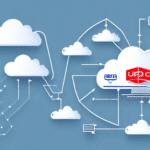Sendcloud vs ShippingEasy: Comparing Top Shipping Software for eCommerce Businesses
Introduction: The Importance of Efficient Shipping in eCommerce
In the competitive world of eCommerce, efficient shipping is a cornerstone of customer satisfaction and business success. Timely deliveries and accurate order fulfillment can significantly impact customer loyalty and repeat business. However, managing shipping operations can become increasingly complex as order volumes grow. This is where shipping software solutions like Sendcloud and ShippingEasy play a crucial role. This article provides an in-depth comparison of these two leading shipping platforms to help you determine which one aligns best with your business needs.
Why Compare Shipping Software?
Choosing the right shipping software can streamline your operations, reduce costs, and enhance the overall customer experience. With numerous options available, it's essential to evaluate the features, pricing, integrations, and support each platform offers. By conducting a thorough comparison, you can make an informed decision that supports your business growth and operational efficiency.
Overview of Sendcloud and ShippingEasy
Both Sendcloud and ShippingEasy are reputable cloud-based shipping software solutions designed to simplify and optimize shipping processes for eCommerce businesses. While they share common goals, each platform offers unique features and pricing models tailored to different business sizes and needs.
Sendcloud
Sendcloud is a robust shipping and returns management platform aimed at small to medium-sized eCommerce businesses. It offers automation features that help reduce shipping-related costs and improve customer experience. Key features include:
- Automated shipping label generation
- Integration with multiple shipping carriers
- Shipping rate comparison
- Automated tracking notifications
- Returns management
- Global address validation
ShippingEasy
ShippingEasy is a comprehensive shipping software solution tailored for small to medium-sized businesses. It provides a wide range of features to manage shipping and inventory, including:
- Automated label creation and printing
- Carrier integrations with USPS, FedEx, UPS, and DHL
- Order management and batching
- Inventory management and product tracking
- Automated shipment notifications
- Advanced reporting and analytics
Key Features Comparison
Automation and Efficiency
Both Sendcloud and ShippingEasy offer robust automation features that streamline the shipping process. Sendcloud excels in automated label generation and tracking notifications, while ShippingEasy provides comprehensive order management and batching capabilities. According to a Business Insider report, automation can reduce shipping errors by up to 70%, highlighting the importance of these features.
Carrier Integrations
Sendcloud supports a wide range of carriers, including DHL, UPS, and local European carriers, making it ideal for businesses with international shipping needs. ShippingEasy, on the other hand, offers strong integrations with major carriers like USPS, FedEx, UPS, and DHL, and excels in integrating with marketplaces such as Amazon, eBay, and Etsy.
Pricing Models
Sendcloud utilizes a pay-as-you-go pricing model, charging businesses only for the shipments they handle. This flexibility is beneficial for businesses with fluctuating shipping volumes or those just starting out. In contrast, ShippingEasy offers tiered pricing plans ranging from $0 to $199 per month, depending on the number of shipments and required features. According to Forbes, tiered pricing can provide predictable budgeting for businesses with steady shipping volumes.
Integration with eCommerce Platforms
Both platforms integrate seamlessly with popular eCommerce platforms like Shopify, WooCommerce, and Magento. ShippingEasy offers additional integrations with BigCommerce and Volusion, providing more flexibility for businesses operating on multiple platforms. Sendcloud, however, focuses primarily on integrations with major platforms, ensuring reliable performance and support.
Customer Support and Resources
Support Services
Sendcloud provides email and phone support, along with a comprehensive knowledge base featuring articles and FAQs. ShippingEasy offers live chat, phone support, and a community forum where users can exchange tips and solutions. ShippingEasy has been recognized for its exceptional customer support, receiving multiple awards in this area.
Training and Onboarding
Both Sendcloud and ShippingEasy offer personalized onboarding services. Sendcloud assigns a dedicated account manager to guide new users through the setup process. ShippingEasy provides onboarding specialists who offer training sessions to ensure users can effectively utilize the platform's features.
Pricing Plans Comparison
Choosing the right pricing plan depends on your business's shipping volume and feature requirements. Sendcloud's pay-as-you-go model starts at €25 per month for 100 shipments, making it cost-effective for smaller businesses or those with variable shipping needs. ShippingEasy's plans range from free for up to 50 shipments to $199 per month for higher volumes, offering flexibility for growing businesses.
Both platforms offer discounts for annual payments, with Sendcloud providing a 10% discount and ShippingEasy offering a 5% discount. Additionally, free trial periods are available, allowing businesses to evaluate the software before committing to a paid plan.
User Reviews and Ratings
Customer feedback plays a vital role in evaluating shipping software. According to Trustpilot, ShippingEasy holds a rating of 4.6 out of 5, while Sendcloud has a rating of 4.5 out of 5. Users praise both platforms for their ease of use, automation capabilities, and reliable customer support.
Pros and Cons of Sendcloud
Pros:
- Cost-effective pricing with pay-as-you-go model
- Extensive carrier integrations
- Automated shipping and tracking features
- User-friendly dashboard with real-time insights
- Global address validation and returns management
Cons:
- Limited integrations with some eCommerce platforms
- May not cater well to businesses with large shipping volumes
- Fewer advanced features compared to ShippingEasy
Pros and Cons of ShippingEasy
Pros:
- Comprehensive feature set including inventory and order management
- Strong customer support with multiple support channels
- Wide range of integrations with eCommerce platforms and marketplaces
- Advanced reporting and analytics tools
- Automated shipping processes and notifications
Cons:
- Higher cost for smaller businesses
- Advanced features may require additional training
- Can be overwhelming for businesses with minimal shipping needs
Best Fit for Small Businesses
For small businesses with limited shipping needs and lower volumes, Sendcloud is an excellent choice. Its flexible pricing and straightforward automation features make it a cost-effective solution that’s easy to implement without extensive technical expertise.
Best Fit for Enterprise-Level Businesses
Enterprise-level businesses with high shipping volumes and complex needs may find ShippingEasy to be the better option. Its extensive feature set, robust integrations, and superior customer support cater well to larger operations requiring advanced shipping and inventory management capabilities.
Conclusion: Choosing the Right Shipping Software for Your Business
Deciding between Sendcloud and ShippingEasy ultimately hinges on your business's specific requirements and shipping volumes. Both platforms offer powerful tools to enhance your shipping operations, reduce costs, and improve customer satisfaction. Small businesses may benefit more from Sendcloud’s flexible pricing and ease of use, while larger enterprises might prefer ShippingEasy’s comprehensive features and extensive support. Carefully assess your business needs, consider the features and pricing models, and utilize free trials to determine which shipping software aligns best with your eCommerce strategy.
Future Trends in Shipping Software
The shipping software industry is rapidly evolving, driven by advancements in technology and changing market demands. Key trends to watch include:
- Increased Integration: Enhanced integrations with a broader range of eCommerce platforms and marketplaces to streamline operations further.
- Advanced Analytics: More sophisticated analytics and reporting tools to provide deeper insights into shipping performance and cost management.
- Automation and AI: Greater use of automation and artificial intelligence to optimize shipping routes, predict delivery times, and reduce costs.
- Sustainability: Growing focus on eco-friendly shipping practices and sustainable packaging solutions.
Staying abreast of these trends will help eCommerce businesses leverage the latest technologies to maintain a competitive edge and meet the evolving expectations of customers.
Final Thoughts on Shipping Software Selection
Investing in the right shipping software is pivotal for the success of your eCommerce business. By thoroughly evaluating platforms like Sendcloud and ShippingEasy based on their features, pricing, integrations, and support, you can choose a solution that not only meets your current needs but also scales with your business growth. Embrace the power of advanced shipping software to enhance your operational efficiency, reduce costs, and deliver exceptional customer experiences.




















